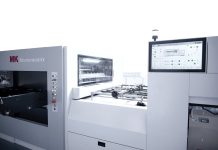For industries requiring strength, durability, and lightweight, forged aluminum is highly regarded. The forging process involves shaping aluminum under a lot of stress, which improves its mechanical properties and ensures that the grain structure is uniform. This results in a material that is substantially more potent and has greater proof against effect and fatigue as compared to solid aluminum.
One of the key blessings of forged aluminum is its first-rate energy-to-weight ratio, making it best for aerospace, car, and sporting goods programs. Its superior thermal conductivity and corrosion resistance further contribute to its versatility. To learn more about forging material visit our website https://www.cxinforging.com/maximizing-durability-the-advantages-of-forged-aluminum-in-industry/. Additionally, the forging method allows for the introduction of complex shapes and designs, presenting engineers with more flexibility in their tasks.
Enhanced Material Properties through Forging
The primary purpose for the improved properties of forged substances lies in the manner forging affects the microstructure of the metal. This article explores how forging enhances material properties, focusing on grain refinement, directional strength, improved fatigue resistance, and elevated longevity.
Grain Refinement
Metals’ mechanical homes are in large part determined by using their grain form. The forging process includes heating the metallic to a temperature at which it will become malleable and then deforming it below excessive strain. Metallic grains ruin down and recrystallize into a finer shape as a result of this deformation.
First-rate-grained metals exhibit several wonderful properties. Firstly, they tend to have better energy and hardness. Secondly, high-quality grains beautify the metallic’s resistance to crack propagation, as cracks tend to deflect at grain obstacles, making it harder for them to develop.
Directional Strength
Forging imparts directional properties to metals, a phenomenon called anisotropy. The compressive forces carried out through forging align the grains within the path of the force, growing a fibrous structure. This fibrous grain structure is highly useful for additives on the way to enjoying directional loading all through the provider.
As an example, in a forged crankshaft, the grain waft aligns alongside the contours of the crank, providing maximum energy where it’s far needed. This directional power guarantees that the component can resist higher stresses without failing, which is particularly critical in applications with difficulty with cyclic loading or impact forces.
Advanced Fatigue Resistance
Fatigue resistance is an important property for additives subjected to repeat cyclic loading, which includes car and aerospace parts. Forging complements fatigue resistance through the removal of inner voids and porosity that are commonplace in forged and welded elements. These voids and porosities act as strain concentrators and provoke cracks underneath cyclic loading. Throughout the forging technique, the compressive forces near these voids, result in a greater homogeneous and dense material.
Increased Toughness
Toughness, the ability of a material to absorb power and warp plastically earlier than fracturing, is every other property improved by way of forging. The high-quality-grained shape and the removal of defects contributed notably to this improvement. The forging procedure additionally imparts residual compressive stresses at the floor of the solid elements.
These stresses act to counteract the tensile stresses skilled at some point of the carrier, thereby delaying the onset of crack formation and boom. This combination of first-rate grain structure, illness removal, and residual stress outcomes in forged components with superior durability.
Homogeneous Microstructure
Some other key gain of forging is the homogeneity it imparts to the material’s microstructure. The intense deformation and recrystallization tactics for the duration of forging make certain that the material has uniform residences throughout its volume. This homogeneity is particularly essential for components subjected to excessive stresses because it ensures consistent overall performance and reduces the threat of sudden disasters.
Conclusion
Forging drastically enhances the material properties of metals via a combination of grain refinement, directional electricity, advanced fatigue resistance, increased toughness, and homogeneous microstructure. These upgrades make forged components relatively ideal for vital packages in industries including cars, aerospace, and heavy machinery. As production technologies continue to increase, the standards of forging stay essential in producing high-overall performance, reliable, and durable parts.










